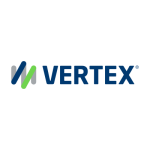It is becoming increasingly important that businesses have control over their VAT, otherwise attempts at navigating the indirect tax landscape can easily become a minefield. The e-commerce boom in recent years has influenced tax authorities across the world to start putting in place legislation to help recuperate lost revenue from bricks and mortar sales.
Sellers who trade online and across borders are now under pressure to adhere to more local legislation and increased complex reporting requirements. At the same time, they are expected to have better data capabilities that can support the flow of accurate information, and to ensure their tax control framework discussions are shifting to incorporate indirect tax.
As you can imagine, without the right systems and processes in place, it can be difficult to manage end-to-end indirect tax compliance, putting businesses at risk of audit failure and leading to lost opportunities in times of growth.
The solution is simple: transformation of the tax function. Many organisational departments, including finance, are prioritising digital transformation to help gain efficiencies and free up employees for more value-added tasks – and indirect tax should be no different. Investing in a tax engine that can integrate with multiple enterprise resource planning (ERP) and other financial systems can:
Provide increased visibility across departments;
Reduce data errors caused by human mistakes or incomplete master data;
Support an influx of transactions; and
Ensure real-time data compliance to tax authorities.
Additionally, your IT team will be relieved as they will no longer need to spend large amounts of time updating the systems with the relevant VAT changes. However, strong VAT compliance does not come for free, and with indirect tax not typically a ‘sexy’ topic discussed in the boardroom, it can be an uphill battle to sell a tax engine to stakeholders.
Bringing indirect tax into the boardroom
The role of an in-house VAT manager is subject to constant change. In the past, meetings were attended with VAT legislation at hand, and lengthy discussions were conducted around why specific transactions were not compliant.
This approach has shifted, and the emphasis is now on data, automation, and real-time continuous controls with an increased focus on agility. In a nutshell, companies need to quickly comply with multiple new requirements at speed. How? Bring in the tax engine.
If you want to automate steps in the end-to-end VAT process, stakeholders will often ask you to build a business case. This can be a challenging task at first, as you start to make the actual cost of VAT compliance for your organisation transparent.
Identifying the initial cost of a tax engine is relatively easy, as this is based on quotes from external software and implementation providers. When comparing these quotes, it’s important to be aware that some stakeholders prefer an investment or capital expenditure model while others will prefer a subscription or operating expense model. Another aspect to consider is how these costs should be balanced against alternatives and existing costs. The stumbling block to the business case, however, is communicating the benefits.
How to win over stakeholders
For a VAT manager, it is evident that there are many benefits to a tax engine, but these can be difficult to quantify or can be obstructed by populistic counter arguments. Preparation is key here. Before presenting the business case, think about building your stakeholders a picture of this project before diving into the various benefits, and build alliances to start getting people on your side.
You should also identify who the decision-makers are for the project and determine who will be consulted by your direct stakeholders, then focus on their strategic agenda, operational challenges, and risk appetite.
Strategic agenda
The strategic agenda should align with the overall business strategy and will provide insights into how to communicate indirect tax automation benefits. For example, if the CFO wants to centralise finance operations in a few regional shared service centres, there will be a loss of local tax knowledge, despite compliance requirements remaining the same or increasing. Or, if a CIO wants to reduce IT costs, a tax engine can help by minimising the amount of maintenance around VAT customisation in ERP systems.
Operational challenges
A tax engine can also facilitate a solution for the operational challenges of your stakeholders. For instance, the CIO might be struggling to keep systems up-to-date with constantly changing tax rules. They may also need to spend a significant amount of time and resources on understanding the business implications of these changes – and outsourcing these issues to a tax engine software provider can minimise this burden.
Meanwhile, your head of finance operations may face a delay in AP invoice processing, resulting in late payments to vendors. It is likely this delay had been caused by incomplete or incorrect indirect tax invoice data and lengthy discussions with vendors. Implementing a tax engine provides a lever for accurate tax data management and allocates responsibilities for it within an organisation.
Risk appetite
Finally, consider your decision-makers’ risk appetite. What, for your CFO, is an acceptable level of pain that can come from a tax audit? What outcome will impact the company’s P&L and share price? Only a small percentage of a company’s transactions need to be processed incorrectly to result in significant VAT corrections. But as these are potential corrections, what is their likelihood? For this, as a VAT manager, you need to be aware of tax audit outcomes globally and consider to what degree tax compliance is valued within the organisation.
While an indirect tax engine might be overlooked as part of financial transformation, VAT managers need to bring their voice to the table and ensure the benefits are heard. Not only can this make improvements to the bottom line, but the right solution can also help boost productivity, enable scalability, and ensure end-to-end compliance.
You can find out more information on how to build the business case for tax transformation here.
Get in touch here.












